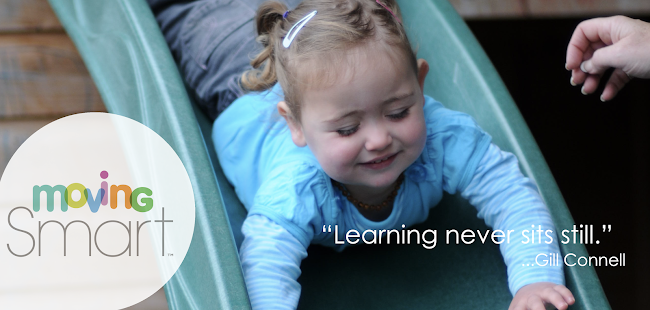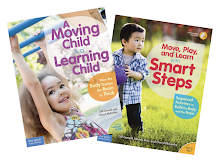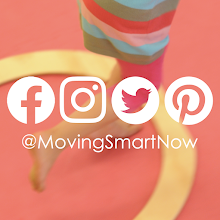The Olympics are in full swing and as always, the swimming pool has been full of nail-biting finishes, broken records, and a new Olympic champion of champions. Congratulations to America's Michael Phelps on his remarkable achievement. And to all the fish in the golden Olympic pond this year, swim on!
As part of our on-going tribute to The Games, let's take a look at what's happening as little fish get their first feel for the water...
AN INTRODUCTION TO WATER
No matter the age, comfort and confidence in the water is a mandatory first step in achieving safety, relaxation, proficiency, and enjoyment in the water. So I strongly recommend a professional "Introduction to the Water" class for all children new to getting wet. And no matter how experienced a swimmer you are, I believe the most effective experiences are parent-child classes that give you important safety and relaxation techniques while being your child's most trusted guide... just as you do every day on dry land.
And note, I'm not calling these "swim lessons." Swimming is a very specific set of skills that involve highly complex and coordinated, whole-body movements -- abilities that young children develop gradually and naturally over many years. Without those abilities in place, trying to learn specific swimming techniques (such as the strokes you see in the Olympics) will be difficult if not impossible to master, and could lead to frustration or even fear of the water.
ON DRY LAND
So while you are looking for a great "Introduction to the Water" class in your area, take heart. Your child is already getting herself ready for the water right here on ON DRY LAND.
Let's take a look at the different swim strokes and I'll show you what I mean...
BREASTSTROKE
Mirrored movement -- both sides of the body doing the same thing at the same time -- is the hallmark of the breaststroke. Here, the arms move simultaneously in a circular motion, beginning at the breast and moving forward and then out and away from the body. At the same time, the legs are doing a mirrored movement called the "frog kick" that builds up speed in the water.
Mirrored movement is actually the first type of movement babies achieve. In fact, you see it very early on. Have you ever noticed when young babies begin reaching out for things, they usually reach with both hands? And of course, we all applaud when baby learns to clap... the two hands meeting in the middle of the body, just like in the breaststroke.
Games that involve clapping are great for practicing mirrored movement. And try clapping like a seal too (clapping with the backs of your hands). And don't forget the legs. Bobbing and jumping like a frog is not only tons of fun, it builds leg strength too!
BUTTERFLY
The signature circular arm motion rising up out of the water looks like butterfly wings taking flight and is another example of mirrored movement. And the legs are use a fishtail or "dolphin kick" mirrored movement for this stroke. Yet this is quite different from the breaststroke, made more complex because with each arm stroke, the legs kick twice. And that takes a mighty amount of body rhythm.
Body rhythm is that internal sense of beat that helps regulate our movements and allowing the body to work as a single unit, or in this case, helping one part of our body move faster or slower than another part.
Young children have an innate sense of rhythm from nine months of listening to mommy's heartbeat in the womb. Then, out here on dry land, young children are exposed to the natural rhythms of life... the rhythm of your voice, the beat of her favorite song, and a rousing round of patty-cake all contribute to her understanding of the rhythm and beat.
BACKSTROKE
The Backstroke requires lateral movement -- when one side of the body is moving in opposition to the other, such as the paddle-like movements of the arms and the kicking motion of the legs in the backstroke.
And then do all that without looking where you're going!
Here the body needs equal strength and control on both the right and left sides, and the head must be centered, straight, and still to keep from veering off course -- the exact abilities that come on line with your child's first attempts at independent movement -- crawling, standing, walking.
Now, of course, mastering and refining these skills on dry land or in the water will take many years of natural, play-filled experiences. But for the not-looking-where-you're-going-part, all I can say is, "Welcome to parenthood."
FREE STYLE
And finally there's Free Style... the most complex of the all the swimming strokes. Here the arms and legs are moving in rhythm and opposition at the same time, while the head moves to the breathing position once every few strokes.
This business about head movement might not seem like much, but in fact, it is a critical early years milestone that almost always goes unnoticed. You see, when babies are born, nature fits them with a series of primitive reflexes to help them navigate the birth canal and the early months/years of life. This includes the STNR (Symmetric Tonic Neck Reflex) which synchronizes baby's arm and head movements. But in order to crawl, a baby must be able to position herself on all fours, raise her head, and move it from side to side in order to see where she's going. Until the STNR reflex is released, crawling and walking cannot begin, let alone jumping into the deep end of running, hopping, skipping, and yes... her first, big-kid swim lessons.
Enjoy the Olympics!
Go Team New Zealand
SHOULDER SPEAK
Shoulder strength and maneuverability are essential in swimming, so playing games that use the shoulders in different ways is a great way to help your child prepare for the water on dry land.
But did you know, the shoulders have a secret language all their own?
To play Shoulder Speak, explain to your child that for the next five minutes, we're only going to speak with our shoulders! For example...
Raise just your RIGHT SHOULDER = "Yes"
Raise just your LEFT SHOULDER = "No"
Shrug BOTH SHOULDERS = "I Don't Know"
Roll both SHOULDERS BACK = "I'm Happy"
Roll both SHOULDERS FORWARD = "I'm Sad"
Raise your shoulders LEFT-RIGHT-LEFT-RIGHT = "I Love You!"
And once you've got the hang of it, what do you suppose the elbows have to say?
Enjoy!

















My daughter is actually learning to swim through an app. It is an ebook that is much like a children's book, but more interactive and education than the traditional paper-back novel. I let her read it through a couple times and than we took a visit to the pool. She had no problem jumping right in. It was actually quite amazing.
ReplyDelete